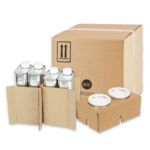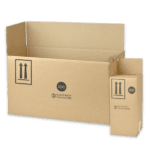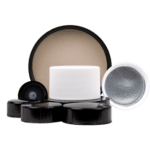All About Closures
After you choose a compliant UN rated box, now is the time to fill up the inner packaging with your dangerous goods and place them inside. But wait, we are missing a step! Not only does the box have to be taped in accordance with the packing instructions, but the inner packaging has to be closed in compliance with the regulations as well. You can read more in our article called “Am I Using the Right Tape on my HazMat Shipment?”. On top of all the other requirements with UN packaging, what do the regulations say regarding closures?
Torque
When you are closing your inner container, let’s say a plastic liter bottle, for example, the regulations are very specific in terms of how to apply the caps. For example, in the 49CFR 178.602 (e), it says that each packaging must be closed in preparation for testing in the same manner as if prepared for actual shipment, and all closures must be installed using proper techniques and torques (how tight the cap must be placed on the container). This means that however the plastic bottle cap was applied on the inner container in the lab, the same torque must be used when using the plastic bottle to ship dangerous goods. In order to achieve this, you would need the packing instructions to tell you how the bottle was torqued, as well as a torque wrench to ensure the correct torque is used.
Types of Caps
Similar to inner packaging, the various regulations do allow some variations in terms of closures in combination packaging. For example, in the 49CFR 178.601 (g) (1) (i) (c), it allows minor differences that would not require a re-test as it states that the inner packaging used is allowed to have the same or smaller openings and the closure must be of similar design (e.g., screw cap, friction lid, etc.). This means that if you use a different closure than what the combination box was tested with, that it must be similar to the cap it was tested with. Transport Canada even goes further and says at 8.1.2.3 in the TP14850 that not only the closure must be of similar design, but it must also be made with the same or equivalent material, such as plastic or metal for example.
What About Single Packaging?
Single packaging, such as drums, are also tested with a specific closure and contains instructions on how to apply it. In the 49CFR at 178.601 (g) (5), it does allow the use of a replacement cap subject to some conditions, such as the packaging must successfully pass a drop test with the different closure as well as single packaging containing liquids must also successfully pass a leakproofness and hydrostatic pressure test. Transport Canada also allows a similar variation when changing caps in a single packaging located at 8.1.1.8 where it says a closure may be replaced by a substitute closure of a different design, material, or thickness if the substitute closure was successfully tested to the same or higher level of performance on a container with same opening design and having the same opening material specification.
ICC not only offers compliant UN combination packaging, but we also offer inner packaging with compliant closures and various types of single packaging.
Do you have questions about UN Packaging? Take a look at our UN Packaging FAQ or contact our team of experts at 855.734.5469 or send us an email, we’re happy to help.
Stay up to date and sign up for our newsletter!
We have all the products, services and training you need to ensure your staff is properly trained and informed.
 Custom Packaging Design Custom Packaging Design |
 4G UN Boxes – Combination |

|






